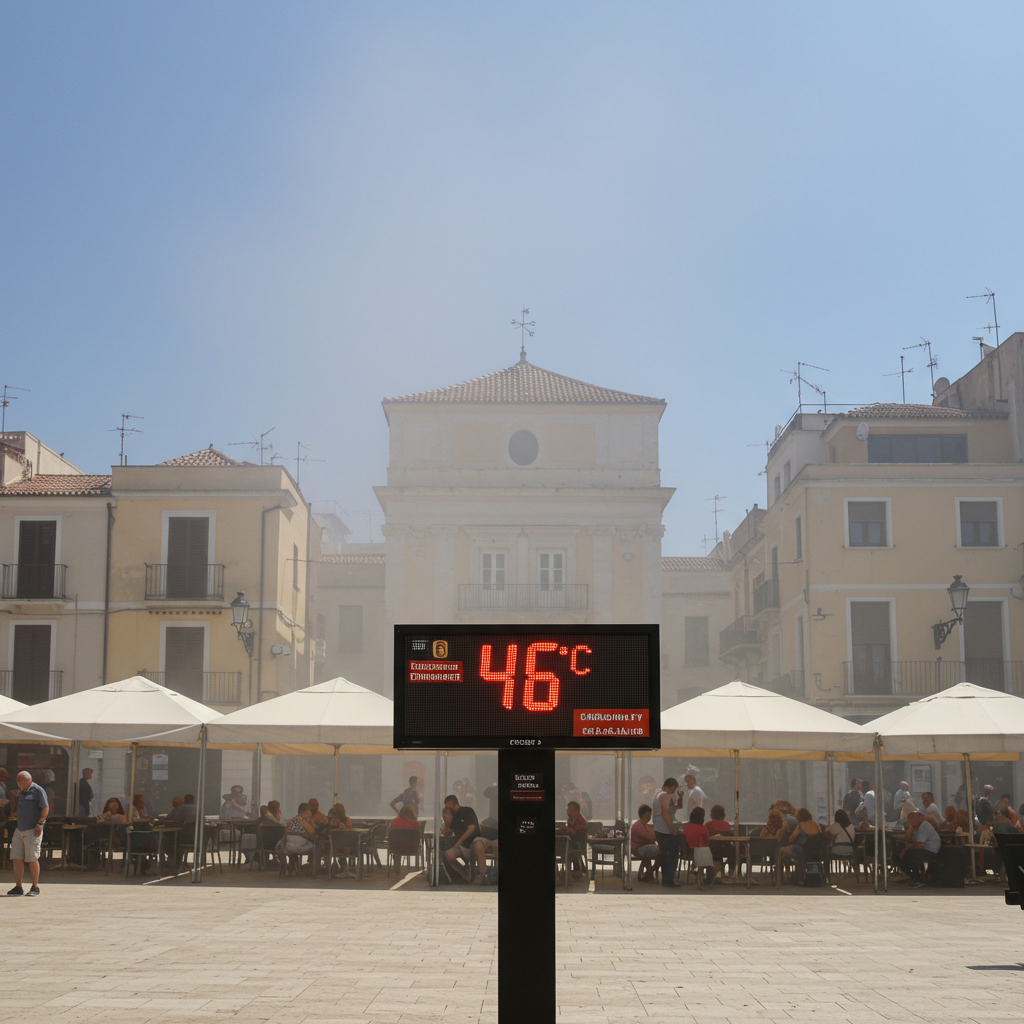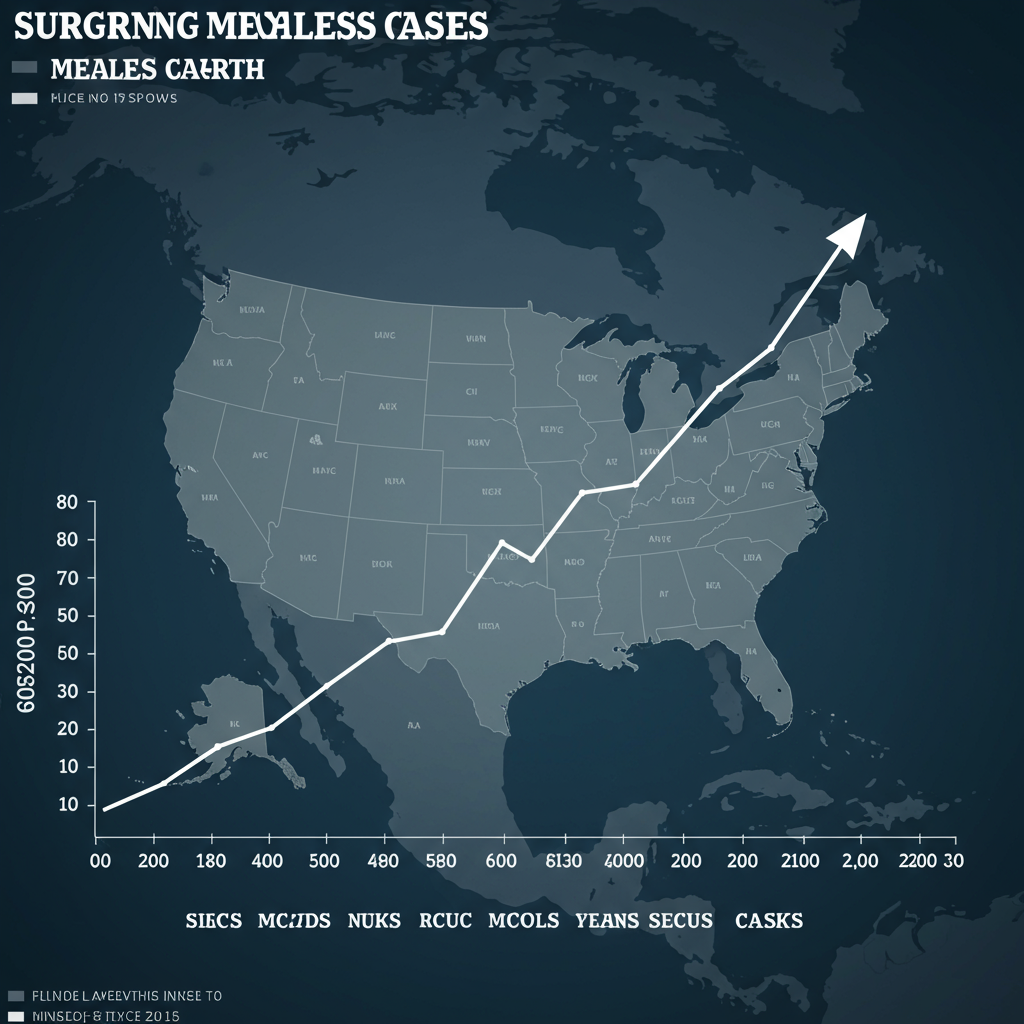Europe is currently grappling with a brutal heatwave, pushing temperatures to unprecedented highs across the continent. Southern European nations like Spain, France, Italy, and Portugal are experiencing the most intense conditions, facing scorching days and uncomfortably warm nights. Authorities are issuing urgent health warnings and scrambling resources as the extreme heat triggers wildfires and poses significant risks to public health. This event underscores growing concerns among scientists and officials who warn that such severe weather is fast becoming the “new normal” due to climate change, intensified by fossil fuel pollution.
Record-Shattering Temperatures Across Southern Europe
The heatwave has delivered exceptional temperatures, setting new records in several locations. Spain, particularly the southern region of Andalusia, has endured some of the most punishing heat. The town of El Granado in Huelva province registered a searing 46C (114.8F) on Saturday afternoon, marking a new June temperature record for the country. This surpasses the previous June high of 45.2C recorded in Seville in 1965. The Spanish meteorological agency, Aemet, confirmed that Sunday, June 29th, was the hottest 29th of June on record since 1950. Forecasters predict temperatures will remain above 40C in southern Spanish cities for several days, with night-time lows struggling to drop below 25C until Thursday morning. The intense heat is expected to persist across Spain until Thursday.
Portugal has also felt the full force of the heat. Mora, located about 60 miles east of Lisbon, recorded a staggering 46.6C (115.9F). Weather officials are currently verifying if this reading sets a new national record for June. Seven of Portugal’s 18 regions are currently under red warnings, signaling an “extreme risk” level due to the heat. Relief is anticipated slightly earlier than in Spain, with meteorologists forecasting cooler conditions by Wednesday night.
Italy is likewise under siege from the heat. On Sunday, 21 out of the country’s 27 major cities were placed under the highest heat alert level. The strain on healthcare systems is becoming apparent, with some of the hottest regions, such as Tuscany, reporting a 20% increase in hospital admissions. Italian health officials are strongly advising people to avoid venturing outdoors during the peak heat hours, typically between 11 am and 6 pm.
France Faces Unprecedented Alerts
The heatwave’s reach extends northwards, placing almost the entirety of mainland France under alert for the first time in the country’s history. Météo-France has issued the second-highest level ‘orange’ heat alerts for a remarkable 88% of France’s administrative areas. Ecology minister Agnès Pannier-Runacher described the situation as “unprecedented.”
In response to the escalating heat risk, the French government has urged businesses to adapt staff working hours to protect employees, particularly those working outdoors. The heat has also impacted education, leading to the partial or total closure of approximately 200 public schools on Monday and Tuesday. Tragically, the first major wildfire of the summer season broke out in south-west France over the weekend, scorching 400 hectares and necessitating the precautionary evacuation of more than 100 residents from their homes.
Widespread Impacts and Mounting Health Concerns
Doctors across Europe are expressing significant alarm over the heatwave’s potential health consequences. The combination of extremely hot days followed by insufficient cooling overnight puts immense stress on the human body and can be lethal. This lack of respite makes the current heatwave particularly dangerous. Health warnings have been issued by authorities in numerous affected countries, urging citizens to take precautions.
The surge in heat-related illnesses is placing considerable pressure on emergency services and hospitals. Beyond the general increase in hospital admissions seen in Italy, some hospitals are implementing specific measures. Ospedale dei Colli in Naples, for instance, has created dedicated pathways to quickly provide critical treatments like cold water immersion for patients suffering from severe heatstroke. Cities are also working to provide relief; Bologna has opened seven climate shelters offering air conditioning and drinking water, while Rome is providing free access to municipal swimming pools for residents over 70. Despite public health advice to stay indoors during peak hours, reports of heatstroke and burns are still emerging, highlighting the severity of conditions even in areas with public advisories. Investigations are also underway, such as into the death of a road sweeper in Barcelona who completed a shift on a day with very high temperatures.
Vulnerable populations are disproportionately affected by the extreme heat. Older adults, individuals with chronic illnesses, homeless people, and outdoor workers face significantly heightened risks. Urban areas present unique challenges due to the “heat island effect,” where concrete and asphalt absorb and re-emit solar radiation, amplifying temperatures. Experts like Radhika Khosla, an urban climatologist at the University of Oxford, note that urban populations and outdoor workers are particularly susceptible and need to take extra precautions like frequent breaks for hydration in the shade.
The human cost of extreme heat is substantial. Globally, heat is estimated to cause around half a million deaths each year. Looking ahead, researchers project that dangerous temperatures in Europe could lead to an additional 8,000 to 80,000 deaths annually by the end of the century, as fatalities linked to stronger heat outpace those saved by milder winters.
Humanitarian organizations are mobilizing to provide assistance. The International Federation of Red Cross and Red Crescent Societies is supporting responders battling wildfires in Turkey, Greece, and Norway. In countries like Spain, Italy, and the UK, their volunteers are actively distributing water and checking on vulnerable neighbours.
The Heat Dome and Climate Change Connection
The immediate meteorological cause of the severe heat across Europe is primarily attributed to a ‘heat dome’. This is an area of persistent high pressure where air descends and warms as it is compressed, effectively trapping hot air below. This particular heat dome, centered near Denmark, has remained stationary for several days, causing temperatures to climb steadily. This phenomenon is also currently impacting parts of the United States.
Adding to the regional heat intensity is an ongoing marine heatwave in the Mediterranean Sea, where surface waters are reportedly 5C hotter than their normal temperature for this time of year, according to data from the University of Maine’s climate change institute.
While heat domes are not new weather phenomena, scientists emphasize that the temperatures they are now delivering are fundamentally different. Dr. Michael Byrne, a climate scientist at the University of St Andrews, points out that “while heat domes are not new, what is new are the temperatures heat domes deliver.” He explains that because Europe has already warmed by more than 2C since pre-industrial times due to human-caused climate change, when a heat dome occurs, it inevitably drives a much hotter heatwave than it would have in the past.
UN Secretary General António Guterres starkly summarized the situation, stating that “Extreme heat is no longer a rare event – it has become the new normal.” He explicitly linked the intensified heat to fossil fuel pollution, highlighting that the planet is “getting hotter and more dangerous” and stressing that “No country is immune.” Climate change is confirmed by scientists through attribution studies as making heatwaves more frequent and intense. For example, analysis showed the UK’s 2022 heatwave, reaching 40C, would have been “almost impossible” without global warming. The Intergovernmental Panel on Climate Change (IPCC) also confirms that heatwaves will become more common and intense as the planet warms further. Experts like Professor James Dyke from the University of Exeter note that recent European heatwaves are a direct consequence of record greenhouse gas emissions, adding that Europe is the fastest-warming continent on Earth.
Broader Impacts and Calls for Action
The extreme heat is not just affecting human health; it’s also driving other critical environmental and social issues. Wildfires are raging in several countries, including Turkey, where strong winds have fanned flames in Izmir province, forcing evacuations. Reports of wildfires have also come from Greece and Norway, in addition to the blaze in France. Germany’s weather service has warned of increased forest fire risks due to heat and dry conditions, with temperatures approaching 40C in some parts of the country by Wednesday.
The prolonged dry, hot weather is also straining water resources. Some cities in Germany are already imposing limits on water extraction to conserve supplies. The heat is impacting nature more broadly, with reports of stressed trees, dried-up flowers vital for pollinators, and wildlife struggling to find water sources.
Even countries farther north, traditionally less affected by extreme heat, are experiencing challenging conditions. The UK is forecast to reach temperatures of 34C in London and the south-east, with the Met Office warning of “uncomfortable” conditions, particularly for outdoor workers and attendees at major events like Glastonbury and the start of Wimbledon, where the opening day was the hottest on record at 29.7C. Authorities in German states like Brandenburg are reminding employers of their obligations under workplace heat protection rules.
Experts universally agree that addressing the root cause is the only long-term solution to the escalating risk of extreme heat. UN Secretary General Guterres called for more action against climate change, emphasizing that rapid reductions in global greenhouse gas emissions to net zero are essential. Scientists argue that avoiding even more extreme heat events in the future necessitates a swift phase-out of fossil fuels, which are intensifying these weather phenomena.
Frequently Asked Questions
Why are temperatures so high in Europe right now?
The immediate cause is a weather phenomenon called a ‘heat dome,’ a high-pressure system trapping hot air over the continent. This heat dome is occurring alongside a marine heatwave in the Mediterranean Sea, where waters are unusually warm. Scientists emphasize that while heat domes aren’t new, the temperatures they produce are significantly higher than in the past because Europe has already warmed by over 2C due to human-caused climate change, primarily from burning fossil fuels.
What measures are authorities taking to protect people?
Governments across Europe are issuing severe health warnings and providing guidance. Measures include advising citizens to avoid outdoor activity during peak heat hours (like 11 am-6 pm in Italy), urging businesses to adjust staff working hours (France), and closing schools (France). Some cities are opening ‘climate shelters’ with air conditioning (Bologna) or offering free access to cooling facilities like swimming pools (Rome). Authorities are also mobilizing firefighters to combat wildfires sparked by the dry heat and imposing water usage limits in some areas (Germany).
How can individuals stay safe during the extreme heatwave?
Health professionals advise several key steps: stay hydrated by drinking plenty of water (avoiding alcohol and caffeine); keep homes cool by closing windows and curtains during the day and opening them at night; avoid strenuous physical activity, especially during peak heat; seek shade or cooler environments like air-conditioned public spaces; wear loose, light-coloured clothing; and importantly, check on vulnerable neighbours, particularly older people and those with health conditions.
Conclusion
The current extreme heatwave gripping Europe is a stark reminder of the reality of climate change and its tangible impacts. With record temperatures shattering long-held benchmarks in countries like Spain and Portugal, and unprecedented alerts being issued across France, the scale of the challenge is clear. This isn’t just a period of hot weather; it is, as the UN Secretary General noted, becoming the “new normal,” driven by a combination of meteorological patterns like heat domes and the fundamental warming of our planet due to fossil fuel emissions. The human toll is already evident in rising hospital admissions and health risks, particularly for vulnerable populations, alongside the devastating impact of wildfires. Addressing this requires immediate action – both in terms of providing humanitarian relief and public safety measures during the current crisis, and critically, implementing urgent, systemic changes to reduce greenhouse gas emissions globally. The time to act on climate change is now, not just for the future, but for the safety and well-being of millions today.




